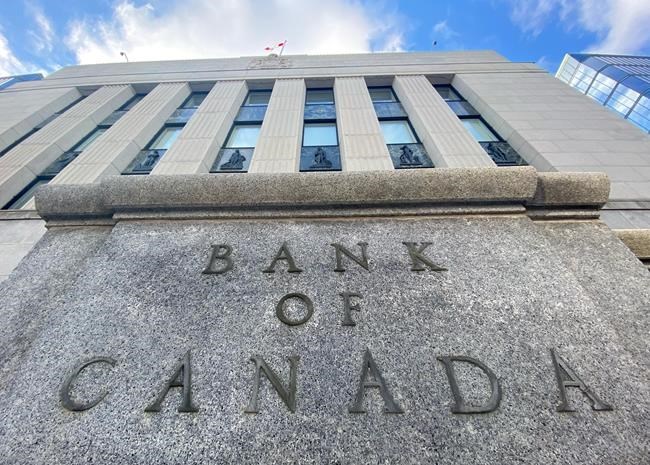OTTAWA — Environmentalists are pressing Canada's central bank to become more forceful in driving financing towards green investments, including actively buying a proposed federal tool to fund the transition to a low-carbon economy.
The bank is working on issuing a federal green bond the Trudeau Liberals proposed in last month's budget, which governor Tiff Macklem has suggested could become part of the bank's purchases under certain conditions.
Alex Speers-Roesch with Greenpeace said the central bank should more actively intervene in markets to drive investments where they are needed, noting a similar suggestion from the Dutch central bank in recent days.
That activity would include purchasing things like green bonds.
Greenpeace is asking that the Bank of Canada's mandate include addressing climate change when it agrees on its new marching orders with the federal government later this year.
Speers-Roesch pointed to that agreement as a way for the bank to maintain independence from political interference by letting the Bank of Canada decide on specific climate-related actions.
The framework agreement is renewed every five years and sets the overarching goals for the bank's monetary policy, which since the 1990s has focused on keeping inflation at two per cent annually.
"Central banks have a huge amount of power here," Speers-Roesch said.
"Looking at the carbon intensity and other sustainability features of the assets that they're purchasing is a really good way to make sure that they're supporting that transition and not slowing it down."
A report this week from the central bank said climate-intensive assets aren't priced properly, which could leave investors exposed to sudden losses and also delays low-carbon investments needed to meet global climate targets.
The Bank of Canada is working on a pilot project with a handful of financial institutions about better pricing the risks from climate change. A final report is expected later this year.
The financial system review released Thursday noted many investors are already shifting to environmentally or socially conscious investments, which in Canada has meant bond issuance has grown from $2 billion in 2017 to $13 billion in 2020.
Globally, the green bond market has grown as part of talks around transition financing, which one expert noted could look different in Canada because of the country's energy sector.
"It's clear that a lot of Canada's energy sector has to begin that transition, and it's not going to happen overnight. Capital is needed to support that transition," said Heather Lang, executive director of corporate solutions at Sustainalytics, which helps issuers set up green bonds.
"Green bonds and transition finance can really help to allocate capital towards supporting that transition, and can help Canada to potentially attract foreign investment in doing so."
The Liberals are looking to issue $5 billion worth of green bonds this fiscal year, which started in April.
Macklem said Thursday that he expected high interest from investors.
He also suggested the Bank of Canada, which issues federal bonds, may look to purchase some as well depending on its purchasing program, known as quantitative easing, or QE, which aims to drive down interest rates on things like mortgages and business loans.
"I could imagine that could be included in our own purchases, if we were doing QE, when that is fully implemented," Macklem said.
The Liberals are also looking at issuing social bonds that allow investors to have their money go to a particular social service, such as child care or programs that reduce homelessness. The bonds have exploded in popularity during the pandemic as the economic downturn has exposed social inequities.
"People became very painfully aware of that social inequality around the globe and the need for more finance," said Alison Babbit, a partner at the firm Norton Rose Fulbright, adding public demand has driven some of that growth.
"Public demand is driving that growth … and, of course, all of these institutional investors and other asset managers, they're responding to that."
The key for issuers is to detail where the money raised from the bonds is going, explain the results the money has achieved relative to the goals set for it, and handle the money separately from other financing to maintain investor confidence.
This report by The Canadian Press was first published May 21, 2021.
Jordan Press, The Canadian Press



